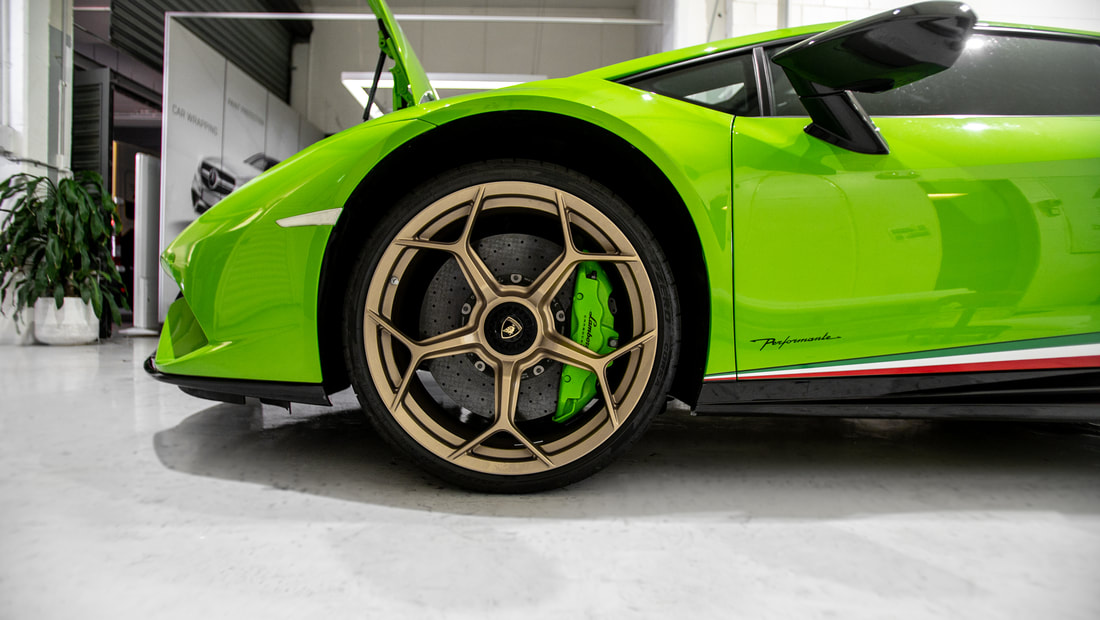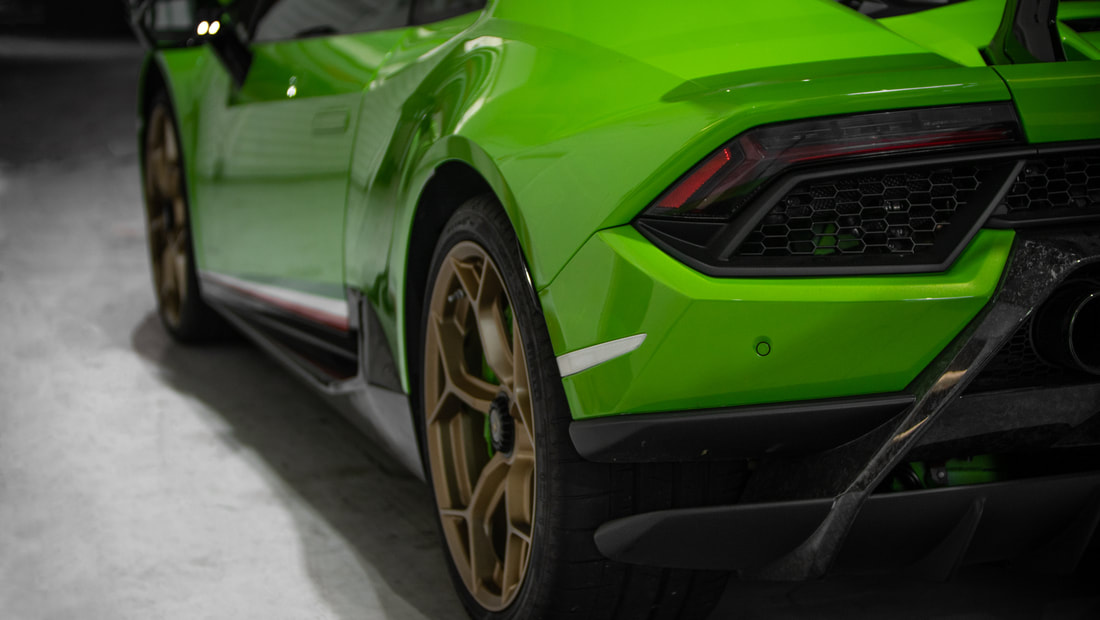Top choices include ceramic coating, vinyl wraps, and chrome wraps. Also proving increasingly popular is paint protection film (PPF), to such an extent that it’s gained a reputation of almost mythic proportions.
But the burning question remains, is paint protection film all that it’s cracked up to be? However, before we tackle the pros and cons of PPF, let’s define what exactly it is.
What started as a military application, aka VentureShield – designed by 3M to protect helicopter rotor blades and other sensitive military equipment from sand erosion and shrapnel damage during the Vietnam War – evolved to become a sophisticated automotive aftermarket car wrap intended to protect its’ exterior surface from general wear and tear, predominately stone chips and similar debris.
One of PPF’s foremost – and appealing – features is its’ capacity to “self-heal” thanks to its’ top layer, which is comprised of an elastomeric polymer. This top layer also gives paint protection film a measure of pliability and helps it maintain a seamless, virtually invisible profile when applied.
The other key feature of PPF is its’ high-quality thermoplastic urethane layer, which is highly resistant to acidic contaminants, corrosion, and oxidisation. It is this urethane layer that also accounts for PPF’s other standout attribute, which is its’ incredible longevity and durability compared with vinyl wraps and other car wrapping options.
When applied correctly by a certified car wrapping expert, PPF has a lifespan of between 5 and 10 years, depending on the level of exposure to environmental factors.
Paint protection film has come a long way from its’ sober beginnings and become so diversified that many options exist on the market. PPF is now available in different thicknesses, in the traditional optically clear version or multiple colours, and gloss or matt finish.
There are also several brand name alternatives on offer. These include 3M Clear Bra, arguably the best-selling paint protection film product in the United States, 3M Stone GUARD, Suntek Matte PPF, Xpel Ultimate, Llumar Platinum, Clear Mask, Invisible Shield, Rock Chip Protection, Clear Wrap, and Car Scratch Protection Film.
It’s a common misconception that paint protection film’s advantages stop at its’ superior protection against impact damage from stone chips and similar road debris. In fact, PPF’s long-term auto preservation properties go so much further than that.
PROS
- Self-heals.
- Absorbs small abrasions.
- Reduces damage from bug splatter, bird droppings, mineral deposits, acid rain, chemical stains, and more.
- Prevents swirl marks, hard water spots, as well as road tar, salt, and fluid stains.
- Combats oxidation and weathering due to excessive exposure to the sun or UV light.
- Keeps your vehicle looking newer for longer, helping to boost its’ investment or re-sale value.
- Extends the lifespan of your vehicle’s exterior.
- Lightweight and transparent.
Clear paint protection film is also favoured by owners of classic cars, as constant waxing and polish are believed to strip the brittle and aged paintwork of these collectible cars, possibly damaging their exteriors and even devaluing them.
However, PPF is not without its’ disadvantages. So, here goes with some of its’ cons.
CONS
- Tends to take the shine off a vehicle’s paint job.
- Some available PPF options are not very hydrophobic, which means that they are not the best at repelling water. As a result, dirt and dust tend to stick to it, and this can spell more trips to the car wash, and more money spent waxing your motor.
The solution, in this case, is to have your car wrapping installer apply a ceramic coating on top of the paint protection film. A ceramic coating works to enhance the day-to-day appearance and lustre of your car’s exterior by improving its’ hydrophobic properties, which means fewer trips to the detailer.
- Another issue with paint protection film is that its’ notoriously dull and can discolour over time, producing a yellowish hue. However, to clarify, this usually applies only to inferior or knock-off PPF products. That’s why it pays to do your homework and ensure you engage a professional PPF installer.
Again, having your car wrap installer apply a ceramic coating on top of a full PPF wrap can work to preserve the lustre of your auto’s paint job. Alternatively, you can choose to install a PPF like Clear Bra on the most vulnerable parts of your vehicle, i.e., the front grill, hood, side-view mirrors, and guards – and apply a ceramic coating on top of the PPF and the remainder of the bodywork.
- If damaged, it needs to be replaced entirely.
- Not suitable for DIY application.
- May damage a vehicle’s paint job if left on too long. Again, it’s vital to clarify that this is usually due to improper preparation techniques or sloppy installation.
- Most costly of the top three vehicle paintwork protection options, i.e., car wax, ceramic coatings, and PPF.
The Verdict?
While paint protection film is an exceptional way to protect your car from minor scratches and surface damage caused by rock chips and other road debris, it isn’t intended to enhance the aesthetics of your motor’s exterior. It’s also not great at keeping your car cleaner. Ultimately, the smart money is on a combination of PPF and a ceramic coating, which promises the best of both worlds.
Also, remember that the cheapest quote is not always the best choice and could leave you feeling disappointed in the quality of workmanship and car wrapping products used.
We focus on quality, not quantity. At PROvinyl, we pride ourselves on being the industry leaders in vinyl wrap and paint protection film applications. We have not one, but two of the most experienced paint protection film installers in the business working for us.
Contact PROvinyl Car Wrapping Sydney today for more information.






 RSS Feed
RSS Feed